
Steve Bullock (2014-2020)
Steve Bullock is an American politician and lawyer that served as the 24th governor of Montana since 2013. He is a member of the Democratic Party. Born in Missoula, Montana, Bullock graduated from Claremont McKenna College and Columbia Law School. He began his career working as legal counsel to the Secretary of State of Montana before becoming the Executive Assistant Attorney General and acting Chief Deputy Attorney General of Montana. Bullock then entered private practice as a lawyer for Steptoe & Johnson. He was an adjunct professor at George Washington University Law School before opening his own law firm upon returning to Montana. In 2008, Bullock was elected Attorney General of Montana, and he served one term from 2009 to 2013.
Wikipedia National Governors Association
Brian Schweitzer (2005-2013)
Brian Schweitzer was a farmer and rancher who had held no elected office prior to being elected Montana's 23rd governor in 2004. The grandson of Montana homesteaders, Schweitzer, a Democrat, grew up on a cattle ranch in the Judith Basin, earned a bachelor's degree in international agronomy from Colorado State University, and a master's in soil science from Montana State University. He worked overseas on agricultural and irrigation projects and has visited 37 countries. Among Schweitzer's accomplishments were job creation; increasing Montana's electrical generation capacity and oil production; and investments in K-12 and higher education. During the Schweitzer years Montana's bond rating was upgraded and a budget surplus of more than $400 million was left at the end of his term.
Wikipedia National Governors Association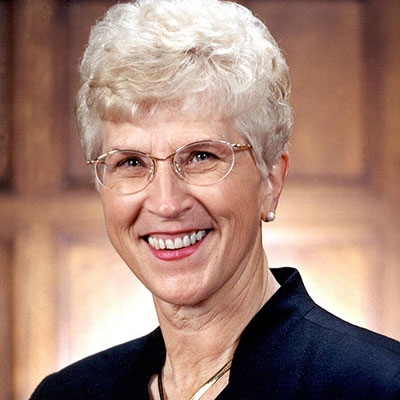
Judy Martz (2001-2005)
Judy Martz was elected in 2000. She is the first woman elected governor and the first woman elected Lieutenant Governor of Montana, on the ticket with Governor Marc Racicot in 1996. She was a member of the 1964 U.S. Olympic Speed Skating Team and also Miss Rodeo Montana. A Republican, Governor Martz was Chair of the Western Governors' Association in 2003, and led the effort among her fellow governors for passage of the federal Healthy Forest Act. Among her many accomplishments, Governor Martz is especially proud of the income and capital gains tax cuts she signed into law and the $163 million budget surplus left at the end of her term.
Wikipedia National Governors Association
Marc Racicot (1993-2001)
Marc Racicot, a Republican from Missoula and Helena, was born July 24, 1948, in Thompson Falls, Montana. A former county prosecutor, and Attorney General, Governor Racicot worked with the Legislature to eliminate a $200 million deficit in 1993, and to produce a $22.4 million budget surplus by 1995. At the Governor's request, the Legislature approved refunding the money to state taxpayers. Governor Racicot went on to become Chairman of the Republican National Committee.
Wikipedia National Governors Association
Stan Stephens (1989-1993)
Stan Stephens, a Republican from Havre, was born September 16, 1929, in Alberta, Canada. A former legislator, Governor Stephens served from 1989 to 1993. As a part of his term, he oversaw the 1989 Montana Statehood Centennial celebration.
Wikipedia National Governors Association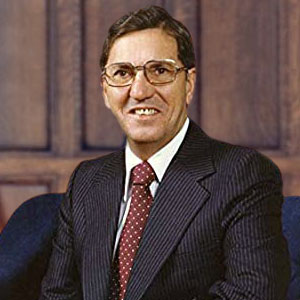
Ted Schwinden (1981-1989)
Ted Schwinden, a Democrat, was born August 3, 1925, in Wolf Point, Montana. A farmer, former Wolf Point legislator, and former Lieutenant Governor, Governor Schwinden served from 1981 to 1989. Through fiscally principled government Schwinden guided Montana through difficult economic times. His "Build Montana" economic plan and his popular traveling "Capital for a Day" events were the hallmarks of his administration.
Wikipedia National Governors Association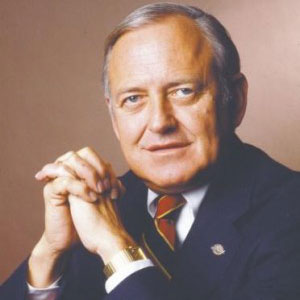
Thomas L. Judge (1973-1981)
Thomas L. Judge , a Democrat, was born on October 12, 1934, in Helena, Montana. A former Helena legislator and Lieutenant Governor, Governor Judge served from 1973 to 1981. The Judge administration worked closely with the legislature to implement environmental protection policies including the Montana Environmental Policy Act, and the Major Facility Siting Act. Governor Judge also signed the Coal Severance Tax into law in 1975.
Wikipedia National Governors Association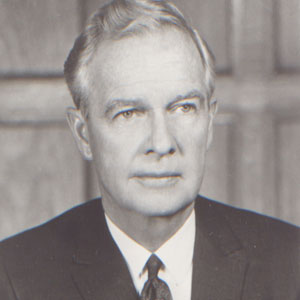
Forrest H. Anderson (1969-1973)
Forrest H. Anderson, a Democrat, was born January 30, 1913, in Helena, Montana. A former Helena legislator, Attorney General, and Supreme Court Justice, Governor Anderson served from 1969 to 1973. Anderson's reorganization of state government combined over 100 state agencies into 19 departments and increased the efficiency of state government. Governor Anderson also authorized the 1972 Constitutional Convention and implemented the new constitution once it was ratified.
Wikipedia National Governors Association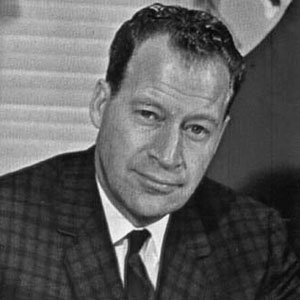
Tim M. Babcock (1962-1969)
Tim. M. Babcock , a Republican from Billings, was born October 27, 1919, in Littlefork, Minnesota. A former legislator, Governor Babcock was elected lieutenant governor with Nutter and succeeded him upon his death in 1962 and served until 1969. Babcock moderated the budget signed by Nutter, and proposed a 3 percent sales tax to support state government. Governor Babcock went on to represent Montana on the Republican National Committee.
Wikipedia National Governors Association
Donald G. Nutter (1961-1962)
Donald G. Nutter, a Republican from Sidney, was born November 28, 1915, in Lambert, Montana. A winner of the Distinguished Flying Cross in World War II, former Richland County Senator and State Chairman of the Republican Party, Governor Nutter served from 1961 to 1962. Facing a revenue shortfall, Nutter signed a budget that cut expenditures for state government. He was killed in an airplane crash at Wolf Creek in January of 1962.
Wikipedia National Governors Association
John Hugo Aronson (1953-1961)
John Hugo Aronson, a Republican from Cut Bank, was born September 1, 1891, in Gallstad, Sweden. "The Galloping Swede" was a former Glacier County Senator and Hi-Line businessman. Governor Aronson served from 1953 to 1961. Aronson authorized the exclusive revenue for the state Highway Department with the creation of state gasoline user taxes. Governor Aronson also authorized the creation of the Legislative Council to assist the legislative branch in the creation of necessary law.
Wikipedia National Governors Association
John W. Bonner (1949-1953)
John W. Bonner, a Democrat from Butte, was born July 16, 1902, in Silver Bow County, Montana. A former Attorney General, Governor Bonner served from 1949 to 1953. A veteran of World War II, Bonner laid out a liberal program for Montana that included the School Foundation Program, which provided state funds to equalize educational standards and opportunities.
Wikipedia National Governors Association
Samuel C. Ford (1941-1949)
Samuel C. Ford, a Republican, was born November 7, 1882, in Albany, Kentucky. A former Attorney General and Supreme Court Justice, Governor Ford served from 1941 to 1949. During his term, Ford reduced the state bureaucracy and faced such issues as a state sales tax, the management of public education, and state liquor control.
Wikipedia National Governors Association
Roy E. Ayers (1937-1941)
Roy E. Ayers, a Democrat, was born November 9, 1882, near Lewistown, Montana Territory. A former United States Congressman, Governor Ayers served from 1937 to 1941. Ayers was the first governor born in what became the state of Montana. During his term, Ayers oversaw the expansion of state bureaucracy and signed a bill to give the governor new powers in directing state government.
Wikipedia National Governors Association
William E. Holt (1935-1937)
William Elmer Holt, a Democrat was born October 14, 1884, in Savannah, Missouri. As President Pro-Tempore of the Montana Senate from Miles City, he assumed the governorship as a result of Governor Cooney's death in 1935. He served until 1937.
Wikipedia National Governors Association
Frank H. Cooney (1933-1935)
Frank H. Cooney, a Democrat, was born December 31, 1872, in Ontario, Canada. A Butte and Missoula businessman, Cooney was elected Lieutenant Governor in 1933. After succeeding Erickson, Cooney served as acting governor until 1935. During his time in office he worked with the federal government to ensure the success of the New Deal. He also reformed the state liquor laws and established a water conservation program. He died in office of heart failure in 1935.
Wikipedia National Governors Association
John E. Erickson (1925-1933)
John E. Erickson, a Democrat from Choteau, was born March 14, 1863, in Stoughton, Wisconsin. A former district court judge and Teton County Attorney, "Honest John" served from 1925 to 1933. As the only governor elected to three consecutive terms, Erickson worked to lead Montana through the Depression. In 1931 Erickson signed a new state income tax into law. He resigned in 1933 to be appointed to the United States Senate.
Wikipedia National Governors Association
Joseph M. Dixon (1921-1925)
Joseph M. Dixon, a Republican from Missoula, was born July 31, 1867, in Snow Camp, North Carolina. A former Congressman, United States Senator and Bull Moose Party presidential campaign manager for Teddy Roosevelt, Governor Dixon served from 1921 to 1925. During his time as governor the farsighted Dixon worked to bring economic stability to Montana and mitigate the effects of a destructive drought. He was the architect of Initiative 28 that sought to equalize Montana's tax burden, ensuring that corporations paid appropriate taxes.
Wikipedia National Governors Association
Samuel Stewart (1913-1921)
Samuel V. Stewart, a Democrat from Madison County, was born in August 2, 1872, in Monroe County, Ohio. A former Virginia City attorney and Supreme Court Justice, Governor Stewart served from 1913 to 1921. A conservative Democrat during Montana's Progressive period, Stewart led the state though the very difficult times surrounding World War I. During his term of office Montana enacted a Sedition Act and the Council of Defense.
Wikipedia National Governors Association
Edwin L. Norris (1908-1913)
Edwin L. Norris, a Democrat from Great Falls, was born August 15, 1865, in Cumberland County, Kentucky. A former Lieutenant Governor, Governor Norris served from 1908 to 1913. Governor Norris signed laws prohibiting discrimination by life insurance companies and passed health laws and made mine operators liable to their employees in case of disability.
Wikipedia National Governors Association
Joseph K. Toole (1901-1908)
Joseph K. Toole, the first governor of Montana (see below), was re-elected governor in 1901 and served for two terms. He resigned due to health reasons in 1908.
Wikipedia National Governors Association
Robert B. Smith (1897-1901)
Robert B. Smith, a Democrat-Populist, was born December 29, 1854, in Hickman County, Kentucky. A former delegate to the Constitutional Convention, Governor Smith served from 1897 to 1901. Under Montana's third governor, the State University at Missoula, the State Agricultural College in Bozeman, and the Normal (Teacher) School in Dillon were created.
Wikipedia National Governors Association
John E. Rickards (1893-1897)
John E. Rickards, a Republican, was born July 23, 1848 in Delaware City, Delaware. Montana's first Lieutenant Governor, Governor Rickards served from 1893 to 1897. As Montana's second governor Rickards oversaw the creation of the state legal code and continued to build Montana's infrastructure in the first years of statehood.
Wikipedia National Governors Association
Joseph K. Toole (1889-1893)
Joseph K. Toole, a Democrat from Helena, was born May 12, 1851, in Savannah, Missouri. A former territorial Legislator, and territorial delegate to the United States Congress, Governor Toole was elected Montana's first Governor in 1889 and served until 1893. Governor Toole led Montana through the first years of statehood and equally divided legislatures to ensure continuity in state government. Toole was a popular governor and was re-elected to the post for two more terms from 1901 to 1908.
Wikipedia National Governors Association